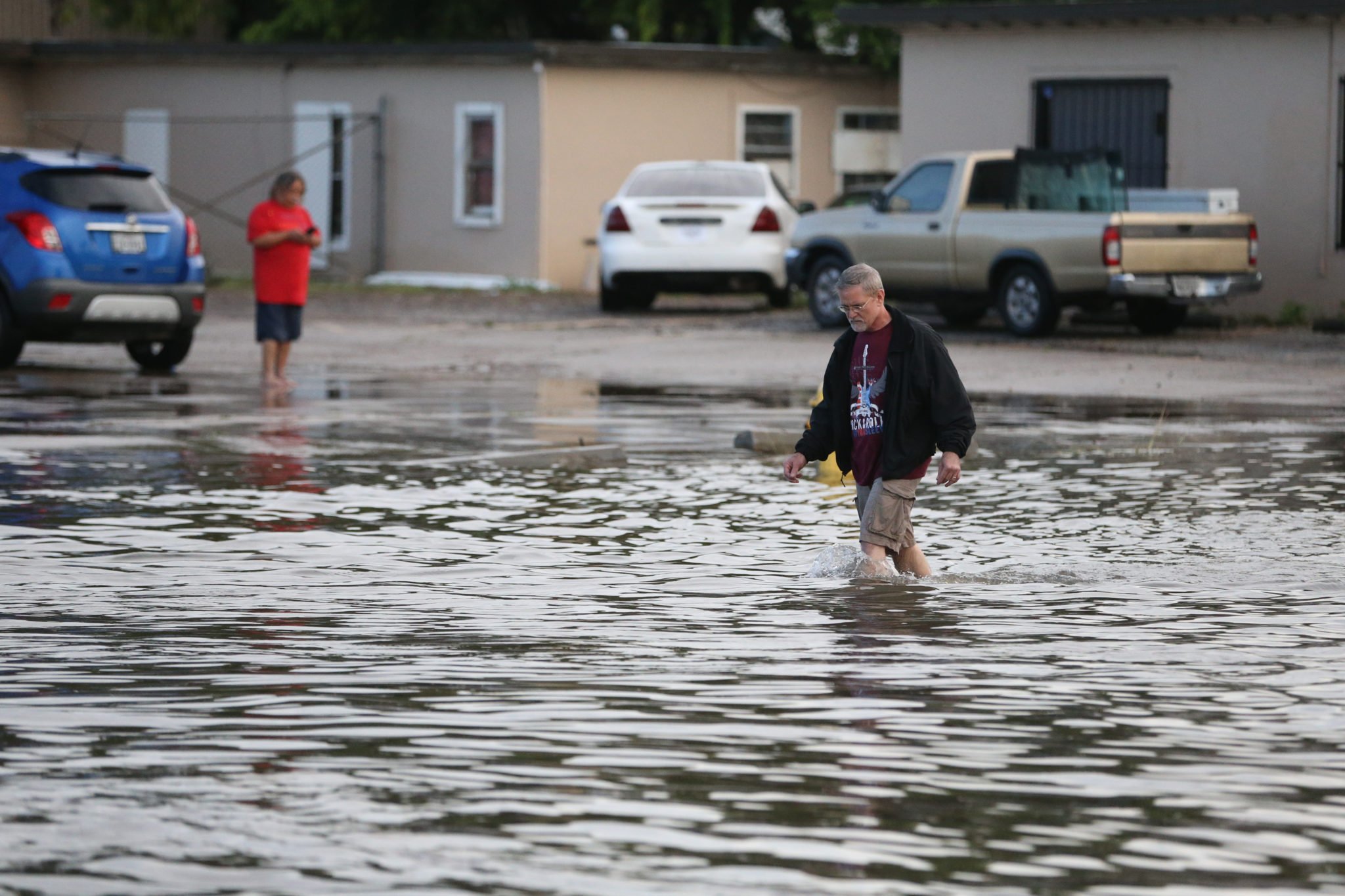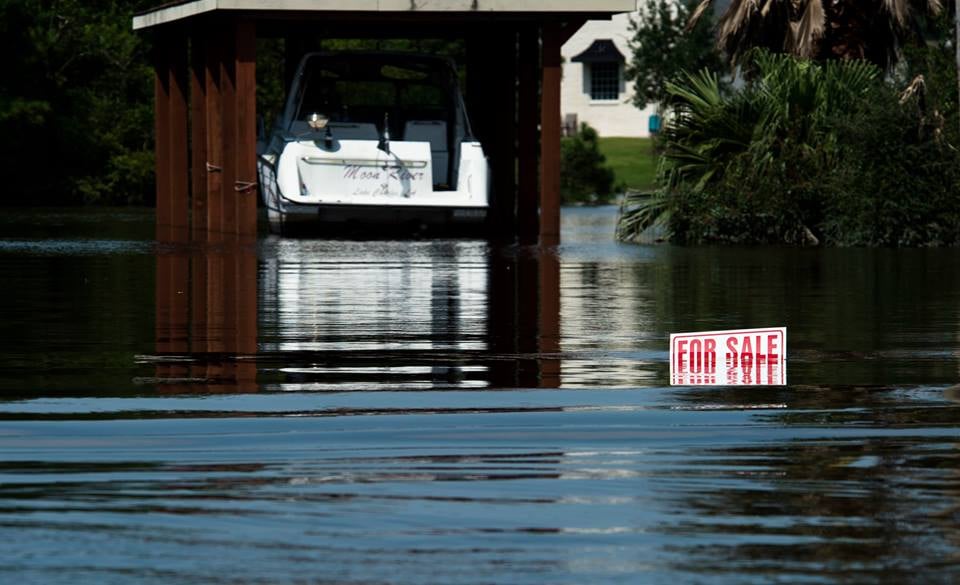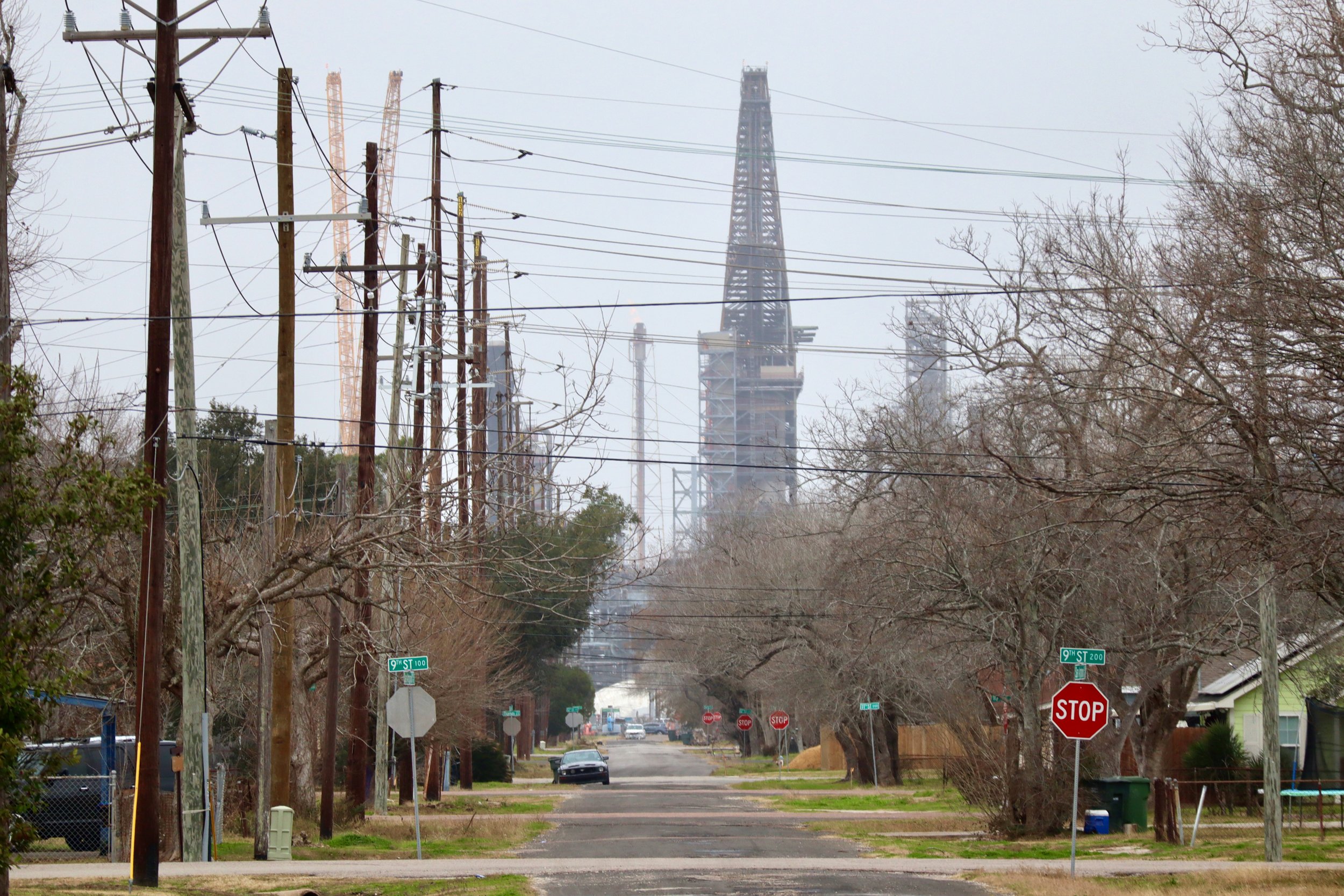
Sinking Land and Climate Change Are Worsening Tidal Floods on the Texas Coast
More than 10,000 homes along the Texas coast will flood at least 26 times a year by 2045, researchers say.

A version of this story ran in the June 2018 issue.
Above: A man walks through the water on Kostoryz Road following severe thunderstorms in Corpus Christi in 2016.
For many folks who call the Texas Gulf Coast home, the coming and going of the tides is just part of the rhythms of salt life. There are high tides and there are low tides, and occasionally “king tides” that overtake normally dry land, boat docks and even roadways. But climate change and rising sea levels are making “sunny-day flooding” an increasingly common occurrence.
Take, for example, Rockport, the arts-and-tourism town that’s picking up the pieces from Harvey: In 2006, the National Oceanic and Atmospheric Administration’s tidal gauge in Rockport recorded just one instance of tidal flooding. In 2016, the same gauge recorded 91 floods. Sometimes called nuisance flooding, the high water submerged low-lying roads in the area. In 2015, the probability that Rockport would deal with one tidal flood a year was 10 percent, according to research by Philippe Tissot, a professor at Texas A&M University-Corpus Christi. By 2070, the probability will jump to 99 percent if climate change continues unabated — a virtual guarantee of at least one annual tidal flood. Other research projects that by 2045 Rockport could experience 35 to 60 floods a year. Eventually, that means low-lying areas in Rockport can expect to routinely be inundated by average high tides.
Scientists expect the oceans to rise at an increasing rate as the planet warms, seawater expands and ice sheets and glaciers melt. Globally, sea levels are projected to rise between 0.66 and 6.6 feet by 2100. Most of Texas’ coastal infrastructure was built without any regard for climate change. Ultimately, Tissot says portions of the coast will face the same existential threats as parts of Florida and Louisiana.
“We’re at the beginning of this flooding in Texas,” he said. “Once you start seeing it over the next few decades, it’ll be happening more and more, and there’s no going back.”
Some parts of the coast — Galveston and Corpus Christi in particular — are also sinking, compounding the rising water levels. The waters near Rockport, for instance, are rising at the fastest rate on the Texas coast: three-tenths of an inch every year, and about 60 percent of that is a result of subsidence, Tissot has found.

In Corpus Christi, nuisance flooding has already led to plummeting property values. The Laguna Shores neighborhood on Oso Bay is experiencing more frequent “king tides” that wash into lawns, streets and ditches. Some lots are permanently underwater. Bruce Callaway, a Laguna Shores resident, told KRIS-TV in 2016 that his property has “actually become part of the bay,” and complained that he was still paying taxes on his submarine plot.
A new study by the Union of Concerned Scientists has quantified the economic hit tidal flooding will bring to coastal towns. In Texas, researchers expect that by 2045, 10,000 homes worth a total of $2.2 billion along the coast will be chronically inundated — that is, flooded at least 26 times a year. These properties are home to about 18,000 people who contribute $38 million in taxes annually. Tidal flooding also puts about 1,500 commercial properties worth $376 million at risk in Texas, the study found.
Researchers also found that communities that have been social and economically disadvantaged, as well as the elderly, are likely to be hard hit by the rising tides. More than 1,200 homes in the La Marque-Hitchcock area, which is roughly 30 percent African-American, and 3,200 homes in Galveston, where almost a quarter of Texans are below the national poverty line, are at risk by 2045. In communities such as the Bolivar Peninsula, Rockport and Fulton, between 20 and 33 percent of residents are over the age of 65.
Still, Tissot is optimistic that planning and preparation can help keep the Gulf at bay — at least for a while. “Nuisance flooding is an addressable concern,” Tissot said. “If you elevate the road and elevate the infrastructure, a foot or two go a long way to slow down the impact of nuisance flooding.”


